All engineering fields depend closely on Mechanic Engineering, and the scholars of this field play an important role in various related industries. Many of its alumni are active now as engineers, head mangers, and/or faculty members.
Shiraz University Faculty of Mechanical Engineering was established in 1964, and then later in 1969stated its master's level programs. Doctoral Courses too were first taught in 1978 and after the victory of the revolution, this faculty re-founded the doctoral courses in 1991. Currently, the Faculty of Mechanic Engineering has four departments: Solid Mechanics Engineering, Heat and Fluid Mechanics Engineering, Energy-Aerospace Engineering, and Nuclear Engineering. This faculty offers bachelor degrees in two majors of solids and heat and fluid design, and master degrees in five majors: mechanics/applied design, mechanics/energy conversion, aerospace/ Aerodynamics, nuclear-reactor and nuclear-radiation medicine, and at the doctoral level, it accepts students in four majors: mechanics/applied design, mechanics/energy conversion, nuclear-reactor and nuclear-radiation medicine.
Faculty of Mechanic Engineering of Shiraz University currently benefits from the activities of 35 faculty members. Of these, 14 are engaged in scientific activities in solid mechanics engineering department, 12 in heat and fluid mechanic engineering and energy-airspace engineering departments, and 9 people in the nuclear engineering department and the radiation research center. So far, more than 2646 undergraduate students, 615 master's students, and 60 doctoral students have graduated from this faculty. Currently, the number of undergraduate students in this is 465, the number of master's students is 295, and the number of doctoral students is 103. In order to complete its theoretical and technical training, this faculty uses a well-equipped set of specialized laboratories and workshops. The names of some laboratories and research centers related to this faculty are as follows: Solar Energy Center, Radiation Research Center, Fast Computing Center, Engine Research Center, Aeronautical Research Center (subsonic wind tunnel system operator), Advanced Design Research Center, Smart Structures Research Center, Wind Tunnel and Aeroelasticity Laboratory, Fuel Cell Research Center, Thermodynamics Laboratory, Heat Transfer Laboratory, Dynamics and Vibrations Laboratory, Nuclear Physics Laboratory, Dosimetry Laboratory, Gamma Spectroscopy Laboratory, Machine Tool Workshop, Welding Workshop, and Auto mechanic Workshop.
